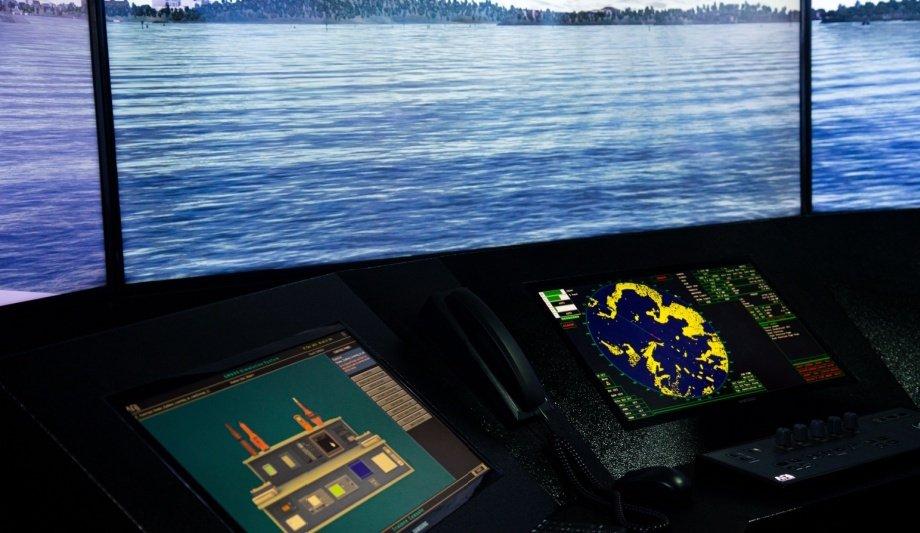More than almost any trend, decarbonisation is driving the future of maritime. That reality alone makes decarbonisation the perfect topic for our first-ever Expert Panel Roundtable column. Traditional maritime fuels, like heavy fuel oil, release harmful pollutants that contribute to air pollution and have adverse health effects. We have to do better, and discussions in the maritime industry centre on which combination of alternative fuels and other technologies can solve the shorter- and longer-term challenges of decarbonisation. For an update on the various approaches, we asked our Expert Panel Roundtable: What are the latest maritime technology trends in decarbonisation?
Over the past years, we have seen a lot of interest around the new fuels. With liquefied natural gas (LNG) and methanol being more mature and vessels being delivered, now we see ammonia-fuelled vessels becoming the new trend. 2024 was an important year for ammonia as a fuel as we saw two important milestones. Firstly, the first ammonia-fuelled vessel to sail the waters (Fortesque Green Pioneer in cooperation with MPA and DNV) provided significant knowledge and hands-on experience on how to design and implement an ammonia fuel system on-board. This project provided practical insights on the steps that the industry needs to take to have ammonia-fuelled vessels. In parallel, we see a big interest increase around Energy Efficiency measures and improvement. Such technologies have been studied and implemented for decades on vessels, but now we see a big boom of development, both improving existing technologies but also developing new ones. This is important as it can help reduce consumption and therefore emissions in the short term but also help reduce fuel demand and cost in the future when we have wider use of low-carbon fuels.
As new fuels and technologies transform the maritime industry, onboard work is becoming increasingly complex. DNV's 2024 Maritime Forecast Report highlights that while decarbonisation drives transformation, maintaining safety is a prerequisite. New fuels introduce novel risks, demanding innovative designs and large-scale seafarer training. Recognising these challenges, NAPA is working to close the "safety gap" with digital tools that simplify operations, enhance crew protection, and improve efficiency. Solutions like automated permit-to-work systems, checklists, and electronic logbooks streamline workflows and regulatory compliance. For example, Anthony Veder, a pioneer in tanker shipping, reported a 14% reduction in administrative workload and saved 2,000 hours per vessel after implementing NAPA's electronic logbook. Seafarers are at the forefront of shipping’s energy transition. As the IMO's Secretary-General recently highlighted, seafarer abandonment and criminalisation are rising. Training, along with digital checklists and automated workflows, can reduce human error and enhance safety. In the face of rapid technological change, digital tools ensure tasks are completed correctly and provide real-time visibility of high-risk activities. Seafarer safety and welfare must remain a top priority as the industry navigates its decarbonisation journey.
Wind power is climbing the industry agenda as a renewable, available, and cost-effective way to reduce climate impact, meet regulatory demands, and drive profitability. Some may question whether, due to its historical pedigree, wind qualifies as a “latest trend,” but recent contract awards and research from the EU (forecasting up to 10,700 wind-assisted propulsion installations by 2030) suggest it most certainly is. One of the reasons behind the surge in interest is the new generation of wind-assisted propulsion systems (WAPS). Breakthrough technology such as bound4blue’s eSAIL® suction sails create exceptional propulsive force from simple, autonomous, and easy-to-install units, delivering double digit fuel – and emissions – savings. They are also the only technologies with a “reward factor” under FuelEU Maritime, simplifying compliance with this stringent new framework. In a world defined by uncertainty, where no one quite knows shipping’s next energy “silver bullet,” WAPS technology is a proven path to more sustainable shipping. 2024 felt like a breakthrough year for the segment. Expect very big things for wind propulsion in 2025, and beyond.
When decarbonisation is discussed, there tends to be a natural, understandable, focus on alternative fuels and green propulsion power sources. However, digital innovation can unlock meaningful gains today – without the need for expensive retrofits, fleet renewal or infrastructure developments – helping us voyage towards tomorrow’s ambitious goals. Integrated vessel and fleet-wide systems, sharing critical data from multiple sources, can help drive enhanced decision making and performance optimisation, with teams on shore and on board working as one. Here at NAVTOR we are involved in the collaborative GASS project (Green AI for Sustainable Shipping), which combines data sharing, advanced machine learning and digital twin technology to enable real-time performance optimisation and dynamic voyage optimisation for any ship, sailing anywhere. We believe this can cut vessel energy consumption and GHG emissions by as much as 20% on the NAVTOR supported fleet. That’s a major stride towards our industry’s ambitious decarbonisation goals.
It might be easier to say what isn’t trending in decarbonisation technologies. Electrification for short sea vessels and harbour craft is a fast-growing area; one ABS is supporting with the new ABS Electrification Centre in Singapore and our continued work with the Maritime and Port Authority of Singapore (MPA). Discussion around nuclear energy in maritime is building steam in a serious way. Nations around the world are committing to new nuclear technologies that could be used in maritime applications. In alternative fuels, LNG is back in the spotlight for a range of reasons while there’s growing interest in ammonia as a cleaner fuel option. Wind-assisted propulsion and carbon capture and storage are also growing amid new regulations. And finally, the industry is starting to understand how we might harness the power of artificial intelligence to support decarbonisation and more efficient operations.
Digital technologies are fundamental to decarbonising hard-to-abate industries such as maritime. Regulations set by the IMO and regional initiatives such as EU ETS and FuelEU, showcase the intrinsic value of digital solutions and other technologies, in reducing emissions, verifying vessel performance, and ensuring compliance. Progressive decisions are necessary for compliance and sustainability, as business as usual is no longer an option. LR’s advisory team and digital solutions through LR OneOcean’s Risk Manager platform can support owners and operators as they assess their exposure to risk. The advance of AI and autonomous technologies will also play a part, contributing to decarbonisation efforts by optimising fuel usage and reducing emissions. LR’s freely available Digital Maturity Framework and Index can support companies seeking to assess and benchmark their digital maturity.
Cummins understands that the maritime industry is highly diverse, with vessels of varying sizes, propulsion systems and fuel needs. Hence, there is no one-size-fits-all solution that will both meet the unique needs of operators for reliable, diesel-like performance, and align with their current operations and available infrastructure, whilst also navigating towards zero emissions. We believe there to be two primary pathways to get to zero. One is using alternative clean fuels, and the other is electric hybridisation. Both paths give us the opportunity to use existing infrastructure that is available to us today, incorporating internal combustion engines with new emission reduction technology. Our studies show that by utilising clean fuels – for example alcohol fuels like methanol or ethanol – operators can reduce CO2 by up to 50 percent. Through electrification, pairing diesel-electric architecture with batteries, CO2 could be reduced by around 30 percent – continuing up to 70 percent when used alongside low carbon fuels. Today, we are developing a retrofit dual-fuel system to pair with our methanol-ready engine – designed to reduce carbon within an existing fleet with minimal engine room changes – as well as continuing to evaluate hybrid electrification systems, with both pathways utilising approved drop-in renewable fuels (HVO and Biodiesel).
The maritime industry is changing fast, with decarbonisation at the heart of innovation. It is safe to say that LNG and biofuels are pioneering the energy transition, with methanol gaining momentum. Ammonia and hydrogen remain in development but face supply and safety challenges. Meanwhile, dual-fuel engines are becoming the new standard, giving shipowners the flexibility to adapt as fuel options evolve. The industry is also seeing automation transform ship operations, requiring crews to be proficient in digital systems, emissions management, and cybersecurity. In addition, we already have the regulatory schemes of the EEDI, EEXI, CII, EU ETS and FuelEU Maritime in place driving the uptake of alternative technologies as well as fuels. Glander International Bunkering supports this transition together with our group providing a full spectrum of marine fuels, including biofuels at 140+ ports as well as LNG across Europe and key bunkering hubs in Asia and North America. We provide guidance and sales of EU allowances, directly for customers outside of the EU and through our sister company GRM inside the EU. Further, our expertise in fuel procurement and risk management ensures clients stay ahead in the evolving maritime landscape.
The drive towards maritime decarbonisation is accelerating, fuelled by the industry’s ambitious emissions targets, evolving regulations, and the increasing demands of cargo owners. Simultaneously, operators face practical hurdles: limited infrastructure for alternative fuels, uncertainty around long-term fuel availability, and the need to balance investment against a vessel’s remaining lifespan. One of the most promising emerging trends to tackle these challenges is the use of digital modelling and data-driven decision making. By creating virtual models of vessels, we can accurately simulate how different technologies—such as hybrid propulsion systems, energy storage solutions, or alternative fuels—will perform under real-world conditions. This enables owners and operators to “try on” potential decarbonisation solutions at minimal cost and risk before making significant investments. Advances in machine-learning algorithms further boost the accuracy of these simulations, enabling the analysis of extensive operational datasets for patterns in routes, fuel consumption and emissions, and vessel performance. For example, Wärtsilä’s Decarbonisation Modelling Service employs these methods to identify the most beneficial retrofit or design options. It is essential to stress that this approach is not only about selecting a technology; it is about understanding how all factors — route optimisation, fuel infrastructure, and financials — come together to shape the best way forward. Equipped with these insights, owners and operators can confidently navigate an increasingly complex landscape, adapting strategies as regulations evolve and alternative fuel solutions mature. Ultimately, harnessing digital models is the key to a data-driven, future-proof decarbonisation journey for shipping.


